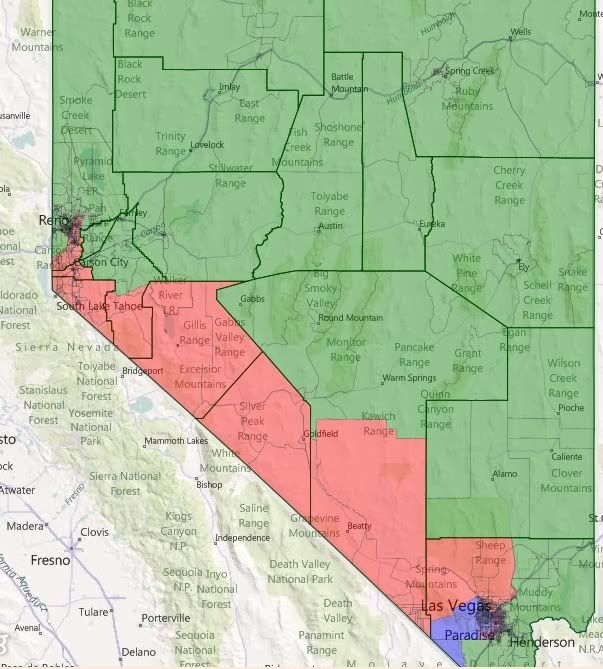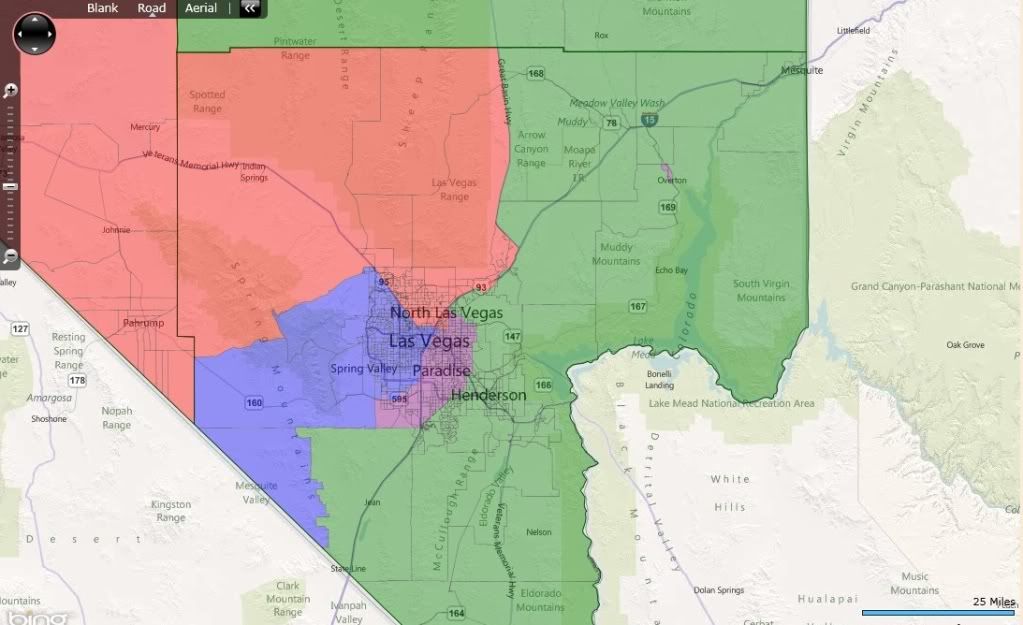As I am sure everyone would agree, the race for Missouri’s senate seat is going to be competitive. The Republicans have a solid roster of candidates that will force Sen. McCaskill to work very hard to keep her seat.
For better or worse, a lot of people seem to be quite negative on McCaskill’s chances to keep this seat. Missouri, they say, is red and getting redder. They acknowledge the center-right status of the state, how hard she had to work last time in a very Democratic year, how much the Republicans will devote to unseating her, and how well the Republicans did this past November.
Of course, Robin Carnahan’s performance in 2010 wouldn’t inspire anyone. Despite being strongly reelected in 2008 with the most votes of any candidate in the history of the state and being from one of its most famous political families, she lost, badly, to Roy Blunt. In fact, “badly” might be too kind. It was, quite simply, a breathtakingly awful loss.
In every county in the state, Carnahan lost support from what McCaskill previously had. Some of that was bound to happen, considering the sharp differences in Democratic fortunes between 2006 and 2010, but we’re not talking about small decreases. In a lot of counties, she lost between 30 and 40 percent of what McCaskill received in 2006. Aside from perhaps Blanche Lincoln, who else running on the Democratic ticket oversaw such losses for her party?
I’m not sure why this is the case–please chime in with details if you know them–but whatever the reason, I thought it might be helpful to visualize the changes from 2006 to 2010. One of the reasons people are down on McCaskill’s chances is that they believe the non-urban areas of the state are becoming out of reach for the Democrats, but a look at the numbers doesn’t necessarily suggest that. In fact, it almost suggests the opposite: the reason for Carnahan’s poor performance wasn’t so much a huge move towards the Republicans but rather a complete implosion of support for the Democrats. You could almost say that the Republicans are close to hitting their peak in the state’s smaller counties.
Below, I’ve attached a Scribd link to a spreadsheet compared the totals for McCaskill and Talent in 2006 to Carnahan and Blunt in 2010. Overall, the gains for the Republicans were impressive, but hardly earth-shattering. In 2006, Talent received 1,006,941 votes, while in 2010, Blunt received 1,054,160 votes. The difference was 47,219 votes, or about a 4.7 percent increase for the Republicans. Meanwhile, in 2006, McCaskill received 1,055,255 votes, whereas in 2010, Carnahan received 789,736 votes. The difference was 265,519 votes, or about a 25 percent decrease for the Democrats. I don’t know about you, but to me, that’s an astonishing figure.
But as bad as those figures might seem, it’s not nearly as awful as it appears upon first glance. It’s pretty obvious that Blunt didn’t simply win over all of the former supporters of the Democrats. Even if you assume that every single additional voter Blunt received over Talent came from McCaskill, you’re still left with 218,300 votes. Split that number in half, giving Carnahan an additional 109,150 votes, and she would have received 43.7 percent of the vote. Had she received all of those additional votes, her total would have been 46.62 percent. (Both figures assume that the Libertarian and Constitution Party candidates received the same number of votes.) With the numbers readjusted, Blunt would have received 51.35 percent in the first example 48.75 percent in the second. In both cases, Carnahan would have lost, but she would have been a lot closer, particularly in the second example.
So what, you say. Blunt still received 47,219 more votes than Talent received. That’s true, of course, but this was during the best year Republicans are likely to have in a long, long time. I wouldn’t be surprised if the Republicans are nearing their ceiling in the state, particularly in the smaller counties. It’s extremely hard, if not impossible, to keep seeing increases of eight to ten percent, if not much more, each cycle (adjusted for population growth and all that). Hell, even a five percent increase is tough to see unless you are are starting from a point of extreme low turnout and are see continuous gains in population, something the Republicans aren’t doing.
Consider Camden County. In 2010, for instance, Blunt received 11,305 votes, up 1,940 from the 9,095 Talent received in 2006, an increase of about 21 percent. In contrast, Carnahan received 4,558 votes, down 1,890 votes, almost 29 percent, from the 6448 votes that McCaskill received. (Interestingly, in absolute terms, these numbers line up almost exactly, so perhaps here, Blunt really was taking from the Democrats.) In percentage terms, Talent received 55.6 percent of the vote while McCaskill received 39.4 percent, whereas Blunt received 66 percent compared to Carnahan’s 27.2. In comparison, McCain received 63.6 percent while Obama received 35.1 percent.
Let’s assume that the Republicans do incredible things and maximize turnout like we could barely imagine. In Camden County, there are 40,705 people, and about 19.2 percent of the population is under 18 years of age. That leaves about 32,890 people. Assuming five percent can’t vote for whatever reason, that leaves about 31,245 people that can. In 2008, 21,133 voted, so there are roughly 9,100 possible voters left. If the Republicans managed a 15 percent increase from McCain’s 2008 total of 14,074, they’d get roughly 2,111 more votes. But the Democrats could get more votes, too. Even if they only saw a five percent increase, they’d get an additional 389 votes from the 2008 total of 7,773. Assuming third-party totals don’t change drastically, in this example, the Republican would get 65.7 percent of the vote, about what Blunt received this past year. In this situation, the net gain for the Republicans is about 1,722.
To me, this suggests that the Republicans have to grow by leaps and bounds to keep up with minor Democratic improvements. Indeed, that looks to be the case. It’s important to consider the sheer size of the counties that form the base of the Democratic party in the state. In St. Louis County, where Blunt amazingly lost a significant percentage of Talent’s total from 2006, a small gain easily could erase if not surpass the increase from a tinier county. Let’s assume there was a similar increase in overall voters of about 11.5 percent, similar to my example above, which bring roughly an additional 64,380 voters to the polls for a total of 624,234. (Just in case that sounds impossible, it’s not. There are probably around 195,000 people in the county that didn’t show up but could have in 2008.) In 2008, Obama received 59.5 percent of the vote, giving him 333,123 votes. If he received just 59.6 percent in 2012, he’d get about 372,044 votes, or an increase of about 38,921 votes. The Republicans would go from 221,705 to about 248,445, a difference of 26,740. (Again, this assumes the third-party totals stay similar.) Had Obama received his 2008 percentage, he would have received about 371,419 votes. The increase of one-tenth of a percentage point, in this example, is worth about 625 votes. Imagine if he simply raised it to 60 percent of the vote, an increase of half a percentage point. In this example, he’d be up to about 374,594, a gain of 3,175 votes. If he could somehow really maximize his potential returns and get 65 percent of the vote, he’d get about 405,811 votes, a gain of about 34,392 votes.
Achieving such totals might seem ridiculously hard, but again, we are talking much smaller increases than the Republican has to see. Just in case what I described above was a little convoluted, let me try to make it more concise. Take Camden and St. Louis County yet again as examples. In 2008, McCain received 14,704 votes in Camden County. If the Republican nominee were to increase on that total by 15 percent, he’d get an additional 2,205 votes. If Obama were to receive just a two percent increase on his 2008 totals in St. Louis County, he’d get about 6,663 more votes. Such an example is simplified, of course, because it’s unlikely that the totals for one side go up while the totals for the other side do not, and there are obviously more small counties than there are big urban ones. But the point is to illustrate that the Republicans probably have to experience incredible, probably unheard of gains just to meet the small gains of the Democrats–and in basically every county of the state.
I brought up Obama, in case it wasn’t obvious, because 2012 will be a presidential year, and the campaign will almost certainly be working the state hard. It’ll probably have the resources to find a small but important (when part of the total sum) number of votes. When you consider that McCaskill is likely to outperform Obama in the smaller counties, giving her an even bigger base erodes the advantage the Republican senate candidate might otherwise have in the smaller counties. And with the Republican senate candidate likely being overwhelmed in the urban areas by the Obama campaign turnout efforts, McCaskill has even more of an edge.
Well anyway, this diary is probably long enough. Suffice it to say that as long as it’s not an awful year, McCaskill has, at worst, a fifty-fifty shot of keeping the seat. If she is able to not drop off too much from her totals in the smaller counties from 2006, she should probably win. If she’s able to meet or exceed them, she will [knock on wood] almost certainly win. Whatever the case, I wouldn’t use 2010 as a basis for much of anything. It was a terrible year and saw, as the the title suggests, a complete collapse in Democratic support. Despite what the Republicans might wish, I’m skeptical they will witness this again any time soon.
Note: if my math or comparisons seem off, please let me know. I am almost certain I didn’t make an error, but despite appearances to the contrary, I am not perfect.
Links:
http://www.scribd.com/doc/4980…
http://www.sos.mo.gov/enrweb/e…
http://quickfacts.census.gov/q…
http://quickfacts.census.gov/q…













